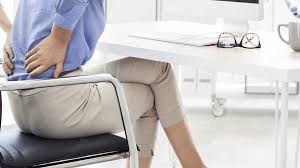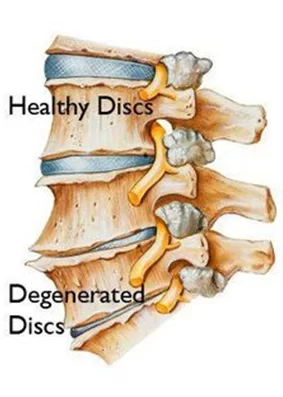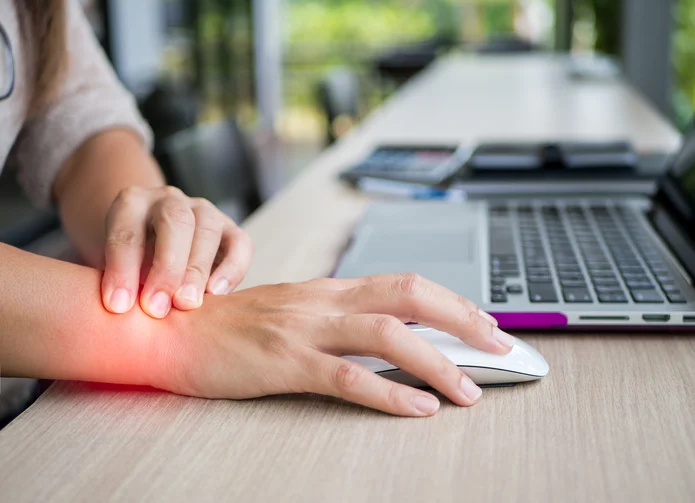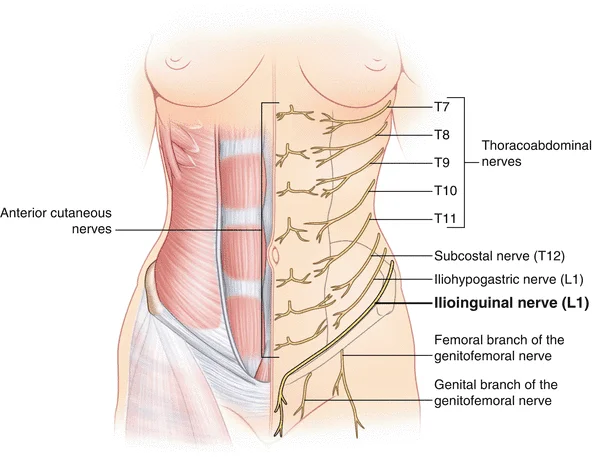Dead Butt Syndrome
Table of Contents
What is a Dead Butt Syndrome?
Dead Butt Syndrome (DBS) is a condition that occurs when the gluteus medius muscle, located in the buttocks, stops functioning properly. This muscle is important for stabilizing the pelvis and supporting the hip joint during movement. When it becomes weak or damaged, it can cause pain and discomfort in the lower back, hips, and legs.
DBS can be caused by a variety of factors, including prolonged sitting, repetitive movements, and poor posture. It is commonly seen in people who spend a lot of time sitting, such as office workers or truck drivers, as well as athletes who engage in activities that require repetitive movements, such as running or cycling.
Symptoms of DBS may include pain in the lower back, hips, or legs, as well as a feeling of weakness or instability in the hip joint. Treatment for DBS typically involves physical therapy to strengthen the gluteus medius muscle and improve overall hip and pelvic stability. Treatment options are medication or surgery to manage symptoms.
Definition
If you spend lots of time sitting posture and not getting up oftentimes to stand, walk, or otherwise move nearby, you may have encountered an issue typically called “dead butt syndrome” (DBS).
The clinical terminology for this situation is gluteus Medius tendinopathy, though it’s even frequently referred to as gluteal amnesia.
As you may anticipate from its familiar name, the condition caused by the gluteal muscles basically “forgetting” their main objective which is maintaining the pelvis and helping your body in correct alignment.
Pushing more and sitting shorter can assist avert or treat dead butt syndrome, but you require to be aware that this odd-sounding condition can result in other issues if not taken seriously.
Symptoms of DBS
After sitting for a prolonged duration, the gluteal muscles (glutes) in your buttocks can feel an abnormally numb sensation or even a slight soreness. But walking and some gentle stretching can carry them back to life relatively fast.
In more severe cases, the symptoms of dead butt syndrome can result in pain and stiffness elsewhere. You may undergo pain present in one or both hips, low back, and knees. Pain can shoot down the lower limb, comparable to the way sciatica feels.
A decrease in strength in your glutes and hip flexors may even happen if DBS isn’t treated. If one hip, in certain, is involved, it may hurt only by lying down on that side.
DBS can lead to inflammation of the hip bursa, a fluid-filled sac that facilitates movement within the hip joint. Other signs of bursitis (bursa inflammation) contain pain and swelling in almost the affected region.
Pain in your lower limb can even result in balance and walking difficulties triggered by DBS symptoms.
To allow relief from hip and back pain when you walk or run, you may change your regular stride. But this can put pressure on your knees, ankles, and foot that they’re not used to, resulting in soreness to occur distant from your butt.
Cause of Dead Butt Syndrome
An inactive routine — spending too much time in a sitting or lying down posture and, not an adequate movement — can result in the gluteal muscles lengthening and your hip flexors tightening.
Hip flexors are muscles that pass from your low back, via your pelvis, and across the front of your thigh. They’re accountable for moving your limb when you walk, run, and ascend stairs.
If the hip flexors aren’t lengthened enough, just taking a quick walk can trigger an attack of dead butt syndrome. Permitting your hip flexors to tighten and your gluteal muscles to stretch can result in inflammation of the gluteal medius tendons.
The gluteal medius is one of the smallish muscles in the buttocks, and the tendons that help it are weak to this type of damage.
Interestingly, people who drive a lot are at a greater threat of DBS if they have too much of their non-running duration at a desk.
The stress of length running, or any severe exercise can be too much for muscles and tendons that go extended duration in the same positions. Other kinds of sportsmen and ballet dancers are also at higher risk.
Diagnosing DBS
If you experience any symptoms of dead butt syndrome — particularly during load-bearing activities, for instance, stepping or stair ascent— see your physician.
A sports medicine professional or orthopedist may even be a suitable option to estimate your symptoms and get you begun on a restorative program if required.
The physician will check your symptoms and medical history, and investigate the regions experiencing pain and stiffness. You may be asked to move or lengthen your legs in distinct positions and express any differences in manifestation.
They may even ask for an X-ray or MRI, but exclusively to rule out other possible situations. These kinds of imaging examinations aren’t particularly useful for diagnosing DBS.
Treatment of Dead Butt Syndrome
The treatment will depend on how far away it has progressed and on your physical activity purposes. If you’re a runner attempting to get back on track as soon as attainable, you’ll want to work near a sports medicine professional to return to exercise safely.
For most individuals, possessing runners and different athletes, the characteristic treatment affects a leave from your exercise or sports routine. You’ll assumably be instructed to follow the RICE protocol, too:
- Rest: staying off your foot as much as possible
- Ice: decreasing pain and swelling with an ice pack or cold compress
- Compression: covering a sore knee or back may be suggestive, but consult your physician for detailed instructions
- Elevation: Keeping your leg above heart level with nicely-supported
In severe circumstances, physiotherapy and massage therapy can be required. The function of physiotherapy may contain flexibility and strengthening exercises that you can do at house.
If there’s been extreme damage to the tendons and muscles, platelet-rich plasma (PRP) therapy or a parallel therapy may be in demand.
With PRP, you’re infiltrated with the attention of your platelets, the kinds of blood cells affected by blood clots, and recovery. The injections are done at the location of your damage. They’re suggested to quicken up the healing process.
Taking acetaminophen (Tylenol) or nonsteroidal anti-inflammatory drugs (NSAIDs), for instance, aspirin, ibuprofen (Advil, Motrin), and naproxen (Aleve, Naprosyn), can enhance symptoms of DBS.
Preventing DBS
The most common prophylactic method for dead butt syndrome is to take a break from the prolonged duration of sitting with frequent walks. Going up and down stairs can be especially valuable.
If you require a reminder, put an alarm on your phone or computer to warn you each hour or half hour. The activity will promote blood flow to the intimate areas and restore your “dead butt.”
All around, try to bring the stairs as frequently as achievable. Not only carry through this initiative the muscles and tendons concerned in DBS, but it’s a sensible load-bearing and cardiovascular physical exertion.
Exercises for DBS
There are various easy exercises you can perform periodically a week to assist maintain the power and flexibility of your glutes, hip flexors, and hip joints.
Hamstring stretches
There are various methods to lengthen the muscles in the back of your thigh, but an easy one is to stand with your left leg in front of your right.
1. With your right leg slightly bent and your left leg straight, bend slightly at the waist until you feel a slight pull on your left hamstring.
2. Maintain for ten seconds, then change your legs.
3. Work up to holding the stretches for 30 seconds at a time.
Glute squeeze
You can likewise perform this exercise standing up.
1. Stand with your feet about hip-width apart and your knees slightly bent.
2. Pull your abdominal muscles in and hold your shoulders back while you squeeze your glutes tightly for about 3 seconds.
3. Then relax your glutes slowly for 1 full repetition.
4. Purpose for 3 times of 10 repetitions.
Squats
This exercise functions your glutes, quadriceps, hamstrings, abdominal muscles, and calves. You can perform it with or without loads.
1. Stand with your feet shoulder-width apart.
2. With your core muscles tightened, slowly bend your knees so your thighs are almost parallel to the ground.
3. Then slowly return to your starting position. This is 1 repetition.
4. Do 12 to 15 reps a couple of days a week.
For counted resistance, use a barbell across your shoulders or a particularly planned squat rack.
Leg lifts
This is one of the most useful exercises for your abdominal and hip flexors muscles.
1. Lie down on a firm, but comfortable, surface.
2. Keeping your legs straight, slowly lift them together high enough that you keep them straight, but feel your muscles flexing.
3. Then slowly lower them again until your heels are a few inches off the floor.
4. Do 10 reps.
Glute bridge
This exercise is even done in the supine position
1. With both knees bent at about a 90-degree angle and your shoulders flat on the floor, lift your hips toward the ceiling.
2. Then lower them back down. The feel of driving down via your heels for stability.
FAQ
To wake up dead glutes, perform dead butt syndrome movements every day, and even prevent sitting for too much duration. Try bringing up each hour to move around and walk. Build glute workouts into your daily routine, for instance, squats, clam shells, hip dips, and bridges.
What are the symptoms of dead glutes?
Symptoms of Dead Butt Syndrome are given below:
Shooting pain down your legs.
Inflammation of the hip bursa leads to swelling.
Pain in your calf muscles.
Numbness in your buttocks.
Difficulty walking upstairs.
Tightness in the thighs.
Pain and stiffness, specifically in the hips, lower back, and knees region.
The feeling of numbness in the buttocks region may be driven by a medical condition, for instance, piriformis syndrome or a compressed nerve. The feeling of abnormal sensation like numbness that originates unexpectedly or is accompanied by the lack of bladder or bowel control or difficulty breathing single a serious medical problem.
Focus On Isolating The Glutes
Squats, Lunges, and Step Ups are a few examples of inadequate glute workouts is that they do not separate the glutes and force them to perform. Due to our modern lifestyle, our glutes frequently don’t innately want to entertain and are frequently inactive and underused.
While there is definitely a fact to the belief that the inactive desk job can cause you to lose muscle tone, as long as you’re holding up with your gym routine outside of the office, you’re not going to terminate bulking muscle in your butt or anywhere else for that concern.








One Comment